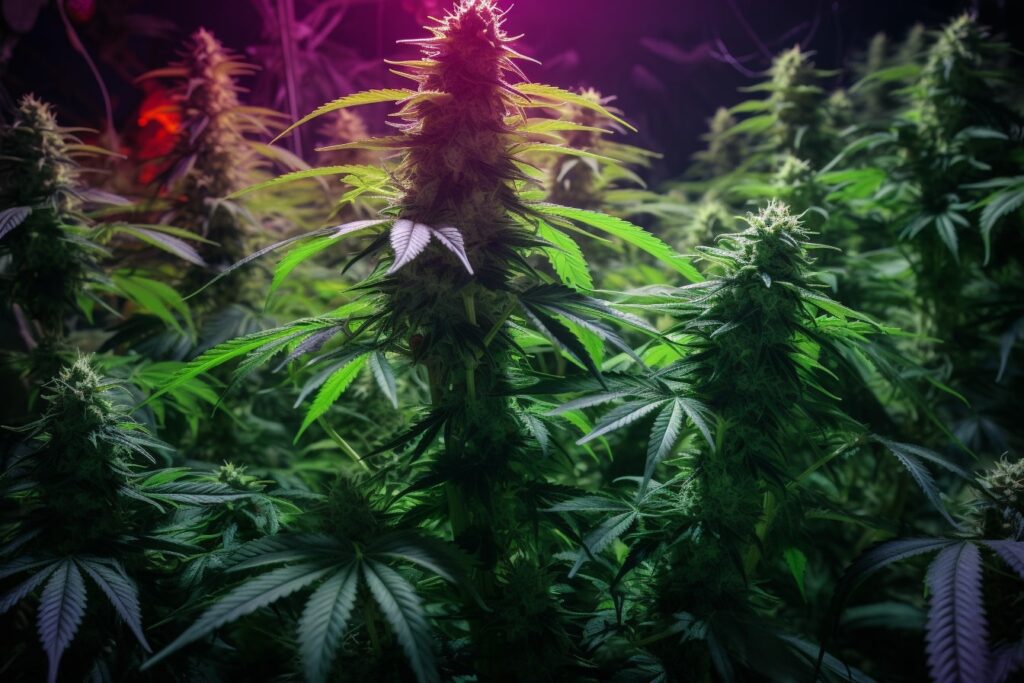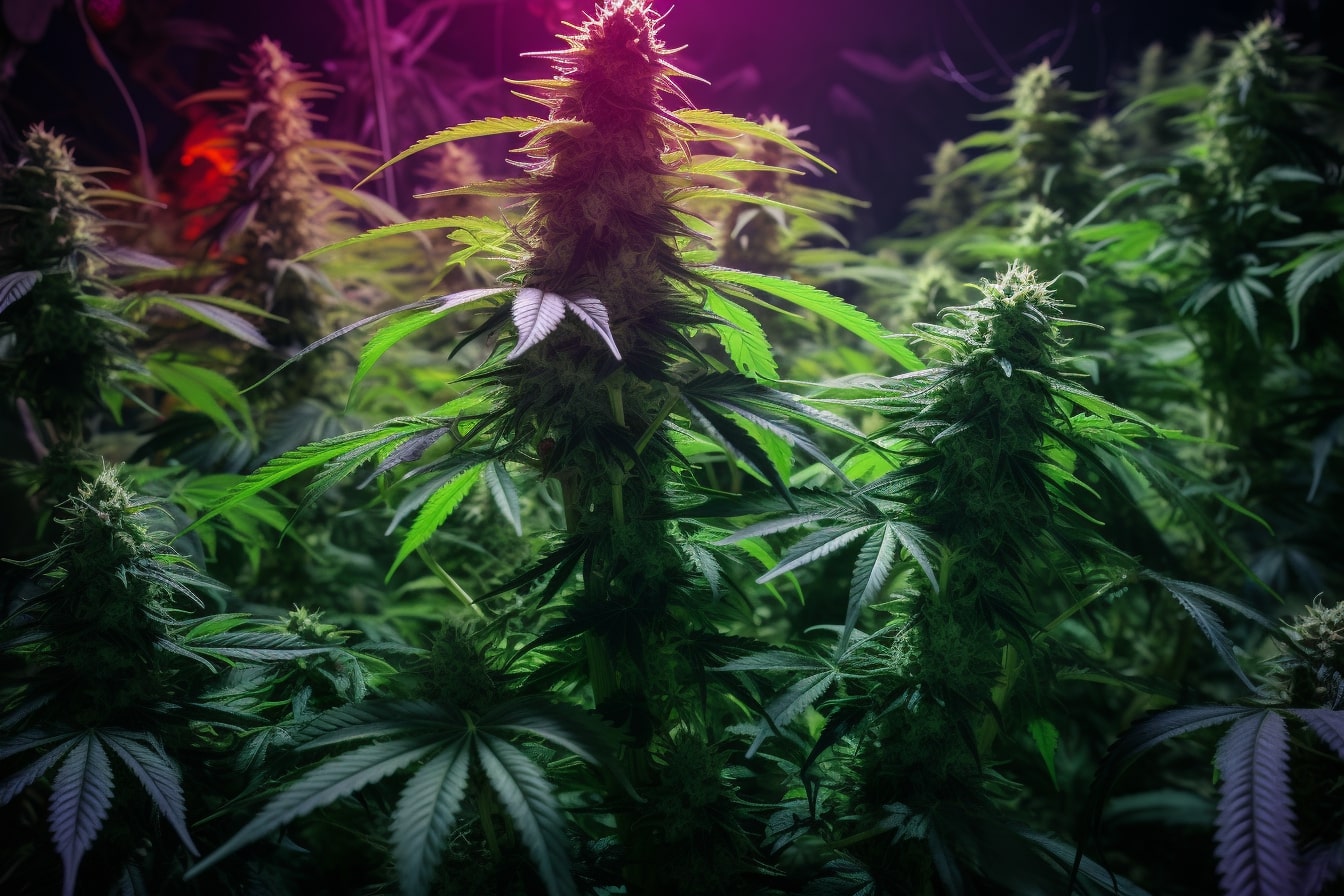
Welcome, cannabis enthusiasts! In today’s world, more and more people are becoming conscious of the products they consume and the impact they have on their health and the environment. Organic cannabis cultivation is no exception to this trend. So, why is organic cannabis cultivation important? Let’s dive in!
Organic cannabis cultivation is essential for several reasons. Firstly, it helps protect the environment by reducing the use of synthetic chemicals and pesticides. This, in turn, promotes biodiversity, improves soil health, and conserves water. Secondly, growing cannabis organically can result in a higher quality product. Organic cannabis often has a better flavor, aroma, and overall potency compared to conventionally grown plants. This is because organic cultivation methods allow the cannabis plant to develop naturally, without the interference of harsh chemicals or fertilizers.
Now that you know the importance and benefits of growing cannabis organically, we’ve put together a comprehensive guide to help you on your journey. This guide will cover everything from preparing for organic cultivation, planting and germination, pest and disease management, harvesting, and curing your cannabis plants. We’ll also share some tips for ongoing success in your organic cannabis growing endeavors. So, let’s get started and learn how to grow cannabis organically!
Preparing for Organic Cannabis Cultivation
Before you dive into growing your own organic cannabis, it’s essential to lay the groundwork for a successful cultivation journey. This includes choosing the right cannabis seeds, selecting the ideal growing medium, sourcing organic nutrients and fertilizers, and setting up an optimal growing environment. Let’s explore each of these aspects in more detail.
Choosing the Right Cannabis Seeds
First and foremost, it’s crucial to start with high-quality cannabis seeds. Look for reputable seed banks or suppliers that offer organic, non-GMO seeds. Additionally, choose a strain that suits your preferences and growing conditions, such as indica, sativa, or hybrid varieties.
Selecting the Right Growing Medium
The growing medium you choose will play a significant role in your cannabis plants’ health and overall yield. Here are some popular organic growing mediums:
Soil
Organic soil is an excellent choice for cannabis cultivation because it provides a natural environment for your plants to grow. Look for soil that contains organic matter, beneficial microbes, and is free from synthetic chemicals. You can also create your own custom soil mix by combining various organic components such as compost, worm castings, and coco coir.
Coco Coir
Coco coir is a sustainable, environmentally friendly alternative to peat moss. It is made from the fibrous husks of coconut shells and offers excellent water retention and aeration properties. When using coco coir, it’s crucial to supplement it with organic nutrients and beneficial microbes to ensure proper plant growth.
Hydroponics
While not as common, it is possible to grow cannabis organically using a hydroponic system. This method involves growing plants in a nutrient-rich water solution without soil. To grow cannabis organically in a hydroponic system, use organic nutrients and avoid synthetic chemical additives.
Sourcing Organic Nutrients and Fertilizers
Providing your cannabis plants with the right nutrients and fertilizers is vital for healthy growth and bountiful yields. Consider these options:
Homemade Compost
Creating your own compost is an environmentally friendly and cost-effective way to provide your cannabis plants with essential nutrients. Use kitchen scraps, yard waste, and other organic materials to create a nutrient-rich compost that will feed your plants throughout their growth cycle.
Organic Store-Bought Options
If creating your own compost isn’t feasible, there are many organic store-bought nutrient and fertilizer options available. Look for products that are specifically designed for cannabis plants and follow the manufacturer’s instructions for proper application rates and timing.
Setting Up an Optimal Growing Environment
A successful organic cannabis grow starts with the right environment. Consider these factors when setting up your grow space:
Indoor vs. Outdoor Growing
While both indoor and outdoor growing methods can yield successful organic cannabis harvests, each has its pros and cons. Outdoor growing often provides more natural sunlight and a larger space for plants to grow, while indoor growing allows for greater environmental control and year-round cultivation.
Light, Temperature, and Humidity Considerations
Proper lighting, temperature, and humidity levels are crucial for healthy cannabis growth. For indoor grows, use energy-efficient LED or full-spectrum lights, and maintain a consistent temperature and humidity level throughout the growth cycle. For outdoor grows, choose a location with ample sunlight and protection from harsh weather conditions.
Planting and Germination
Once you’ve prepared for organic cannabis cultivation, it’s time to plant and germinate your cannabis seeds. This stage is crucial for establishing a solid foundation for your cannabis plants’ growth and development. In this section, we’ll cover properly germinating cannabis seeds, transplanting seedlings, and tips for successful organic cannabis growth.
Properly Germinating Cannabis Seeds
Germination is the process of awakening your cannabis seeds and encouraging them to sprout. To germinate your seeds, follow these simple steps:
- Soak your seeds in a glass of water for 12 to 24 hours to encourage water absorption.
- Place your seeds between moist paper towels or inside a damp sponge, and store them in a warm, dark environment. Maintain a temperature of 70-80°F (21-26°C) to promote germination.
- Check on your seeds daily and keep the paper towels or sponge moist. Within 3 to 7 days, your seeds should sprout a tiny white taproot.
- Once the taproot is visible, it’s time to plant your seeds in your chosen growing medium.
Transplanting Seedlings
After your seeds have germinated and developed a taproot, you’ll need to transplant them into their growing medium. Here’s how:
- Fill a small container or pot with your chosen organic growing medium and create a small hole for the seed.
- Carefully place the germinated seed into the hole, with the taproot facing downward. Gently cover the seed with the growing medium.
- Lightly water the planted seedling to encourage root growth. Be cautious not to overwater, as this can cause the seedling to rot.
- Position your seedling under a suitable light source and maintain ideal temperature and humidity levels for your cannabis strain.
Tips for Successful Organic Cannabis Growth
As your cannabis plants grow, keep these tips in mind to ensure a successful organic cultivation journey:
- Monitor your plants’ growth and overall health regularly. Keep an eye out for any signs of nutrient deficiencies, pests, or diseases.
- Rotate your plants to ensure even light distribution and avoid overcrowding to promote proper airflow.
- Prune your plants to encourage bushier growth and improve light penetration to the lower leaves.
- Top-dress your growing medium with organic compost or nutrient-rich amendments to provide a slow-release source of nutrients throughout the growth cycle.
- Be patient and consistent with your care, as organic cannabis cultivation can require more attention than conventional methods.
Organic Pest and Disease Management
Organic cannabis cultivation requires a proactive approach to pest and disease management. This includes identifying common cannabis pests and diseases, as well as employing organic solutions to combat them. In this section, we’ll discuss how to keep your cannabis plants healthy and pest-free using organic methods.
Identifying Common Cannabis Pests and Diseases
Some common cannabis pests and diseases to watch out for include:
- Aphids
- Spider mites
- Thrips
- Whiteflies
- Fungus gnats
- Powdery mildew
- Gray mold
Regularly inspect your plants for signs of these pests and diseases, and take action as soon as you notice any issues. Early detection and intervention can prevent more severe infestations and damage to your cannabis plants.
Organic Solutions for Pest and Disease Control
There are several organic methods to effectively control pests and diseases in your cannabis garden. Here are some options:
Beneficial Insects
Introducing beneficial insects, such as ladybugs, lacewings, and predatory mites, can help control pest populations in your cannabis garden. These insects prey on common cannabis pests, reducing the need for chemical interventions.
Natural Pesticides
Utilize natural pesticides, such as neem oil, diatomaceous earth, or insecticidal soap, to combat pests without harming your plants or the environment. Always follow the manufacturer’s instructions for proper application and dosage.
Plant-Based Remedies
Some plants, like garlic, marigolds, and chives, can help repel pests and protect your cannabis plants. Plant these companion plants alongside your cannabis to create a natural barrier against pests. Additionally, consider using essential oils derived from these plants as a natural pest repellent spray.
Harvesting and Curing Organic Cannabis
After months of careful cultivation, it’s finally time to harvest and cure your organic cannabis. Proper harvesting and curing techniques are crucial for preserving the flavor, aroma, and potency of your cannabis buds. In this section, we’ll discuss how to determine the right time to harvest, proper harvesting techniques, and curing your cannabis for optimal results.
Determining the Right Time to Harvest
Knowing when to harvest your cannabis plants is essential for achieving the best possible quality and potency. Here are some indicators to help you determine the optimal harvest time:
- Trichomes: Observe the trichomes (tiny, crystal-like structures) on your cannabis buds. When most trichomes have turned from clear to milky white, and some have turned amber, it’s typically a good time to harvest.
- Pistils: Monitor the color of the pistils (hair-like structures) on your cannabis buds. When around 70% of the pistils have turned brown or red, it’s generally a sign that your cannabis plants are ready for harvest.
Proper Harvesting Techniques
Follow these steps to harvest your organic cannabis plants correctly:
- Begin by carefully trimming away large fan leaves from your cannabis plant. This will make the subsequent trimming and drying process more manageable.
- Using sharp, clean scissors, cut the branches containing the cannabis buds. Be gentle to avoid damaging the buds.
- Trim away any remaining small leaves from the buds. These leaves, also known as “sugar leaves,” can be saved for making cannabis concentrates or edibles.
- Hang the trimmed branches upside down in a well-ventilated, dark room to begin the drying process. Maintain a temperature of 60-70°F (15-21°C) and humidity levels around 50%.
Curing Cannabis for Optimal Flavor and Potency
Once your cannabis buds have dried, it’s time to cure them. Curing helps preserve the flavor and aroma, as well as increase the potency of your cannabis. Follow these steps to cure your cannabis buds:
- Remove the dried buds from the branches and place them in airtight glass jars, filling them about ¾ full.
- Store the jars in a cool, dark place. During the first week, open the jars for a few minutes daily to allow for air exchange and to release any built-up moisture.
- Continue to cure your cannabis buds for at least 2-4 weeks. The longer you cure your cannabis, the better the flavor and aroma will become.
By following these harvesting and curing techniques, you’ll be well on your way to enjoying top-quality, organic cannabis!
Tips for Ongoing Organic Cannabis Cultivation Success
As you continue to grow cannabis organically, it’s essential to stay proactive and engaged in the cultivation process. In this section, we’ll share some tips for ongoing success in your organic cannabis growing endeavors, including monitoring plant health, adjusting nutrients and environmental factors, and planning for future grows.
Monitoring Plant Health
Regularly inspect your cannabis plants for signs of stress, pests, and nutrient deficiencies. Catching issues early on is crucial for maintaining a healthy, thriving garden. In addition to visual inspections, consider using tools like pH meters, soil moisture meters, and temperature/humidity sensors to monitor your plants’ environment.
Adjusting Nutrients and Environmental Factors
As your cannabis plants grow, their nutrient and environmental needs may change. Be prepared to adjust nutrient levels, light schedules, and temperature/humidity settings to accommodate your plants’ evolving requirements. Remember that organically grown cannabis plants may require different nutrient ratios and environmental conditions than conventionally grown plants.
Planning for Future Organic Cannabis Grows
As you gain experience and learn more about organic cannabis cultivation, use that knowledge to improve your future grows. Keep detailed records of your growing methods, successes, and challenges to inform your future decisions. Experiment with different strains, growing mediums, and organic nutrients to find the combination that works best for you and your garden.
With dedication, patience, and a commitment to organic growing practices, you’ll be well on your way to cultivating top-quality cannabis while protecting the environment and your health. Remember that the team at Original Johnny Ganja is here to support you with resources, products, and expert advice to help you succeed in your organic cannabis cultivation journey.
Conclusion
In this comprehensive guide, we’ve explored the importance and benefits of organic cannabis cultivation. By choosing to grow cannabis organically, you’re not only contributing to a healthier environment but also enjoying higher-quality cannabis with better flavor, aroma, and potency.
Embrace the world of organic cannabis growing and experience the difference for yourself. With the right knowledge, dedication, and patience, you can cultivate exceptional cannabis while staying true to your commitment to the environment and your health.
We invite you to explore other cannabis-related resources on Original Johnny Ganja’s blog and discover more helpful tips, advice, and information. Our goal is to create a welcoming and knowledgeable atmosphere for cannabis enthusiasts like you. Together, let’s cultivate a greener, healthier, and more sustainable cannabis community.







